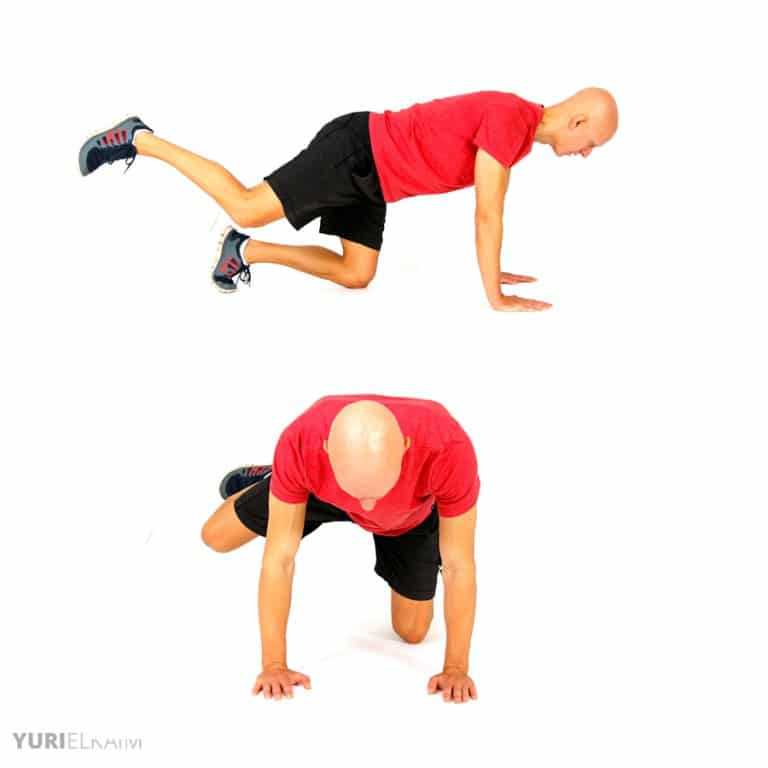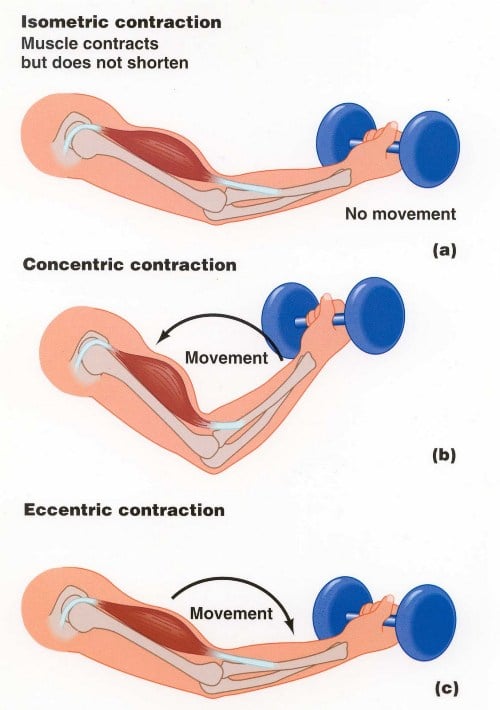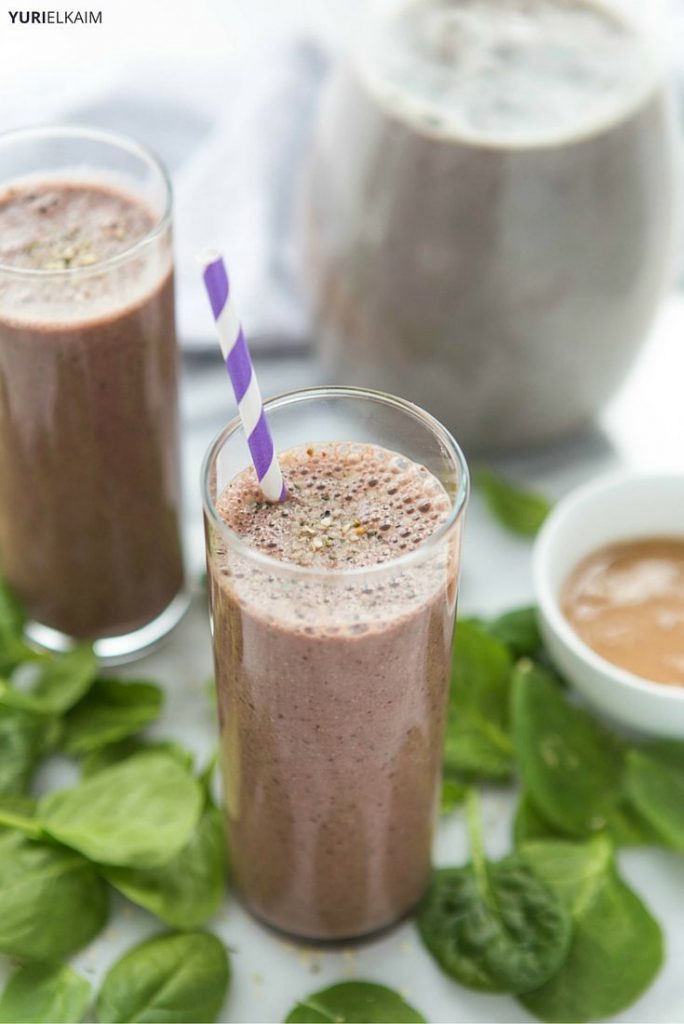Most of us have discovered the infamous “wall” during training.
That’s when your muscles feel like they’ve reached their limit.
If we’re cycling, our legs refuse to push any further. If we’re lifting, we have to drop our weight because our muscles have practically given out.
And while we might think it’s impossible to break through the wall, it turns out it’s actually moveable.
That’s because the “wall” is created by the buildup of lactic acid in muscles, which basically grinds our training to a halt (at least for the day, anyway). It is also partly responsible for the soreness we experience after intense exercise.
Luckily, we can reduce this buildup.
What Exactly Is Lactic Acid
Before we cover how to reduce lactic acid, it helps to understand what it is and how it works.
When we work out, our heart rate and breathing rate increases as our body works to maintain its oxygen levels.
During cardio workouts, the body adapts to this aerobic environment pretty efficiently. However, when we begin to perform intense resistance training, our body becomes unable to meet our muscles’ energy requirements fast enough.
At this point the body produces lactic acid as an alternative energy source.
This is typically felt as a burning sensation in the muscles, as well as muscle soreness felt 48 to 72 hours after heavy lifting.
While this may spur many to try and stop lactic acid production altogether, it’s important to know that some lactic acid is beneficial.
For instance, your body doesn’t only produce lactic acid as an alternative energy source during workouts – it also helps prevent muscle injuries that could come from overworking.
But too much lactic acid production can also inhibit us from training at the higher intensity levels we need to get fitter.
This might sound like a Catch-22 situation.
And while we can’t totally eliminate excess lactic acid during workouts, there are things we can do to improve our lactic acid threshold.
Mainly, we can train our bodies to tolerate progressively higher intensities before producing lactic acid.
How to Reduce Lactic Acid
Let’s look at some ways we can do this and effectively reduce lactic acid during workouts.
1. Warm Up
Warming up before a workout gets blood flowing to muscles and ligaments that might be stiff.
When it comes to lactic acid, more flexibility and blood flow to the muscles means more oxygen is being delivered – resulting in less need for lactic acid (remember, lactic acid production kicks in when not enough oxygen is available).
However, the type of warm up we do is important. Most go the old-school route of holding long stretches (referred to as static stretching), which research has now discovered can actually worsen performance (1).
What type of warm up is the most beneficial?
Dynamic Stretching: Fire Hydrant Circles
It’s all about dynamic stretching, which involves performing sport-specific movements that mimic which muscles will be engaged and stretched during your activity.
For example, if you’re warming up for a run, you’ll want to warm up with a few light lunges, leg swings, knee hugs, and similar exercises.
Studies show that dynamic stretching improves performance. In fact, one study found that athletes completed a series of dynamic stretches before vertical jumping performed better than when they did either static stretching or no stretching at all (2).
Try these: 12 Crucial Dynamic Warm-up Exercises
2. Progressively Increase Exercise Intensity
Remember how we talked about the lactic acid threshold? It turns that when it comes to how to reduce lactic acid, one of the best ways is to train our body to become more efficient at working at higher intensities and buffering its production.
Of course, this type of training will come with a price in the form of soreness.
But if you consistently and progressively increase your workout intensity, you will notice you’ll be able to work out at higher intensities for longer before your muscles are exhausted.
This is the lactate threshold, and it can be raised by lifting heavy weights or performing high-intensity interval training (HIIT) a few times a week.
Eccentric Training helps to increase your lactic acid threshold
Another option you may want to consider to increase your lactate threshold is eccentric strength training.
Eccentric training involves going slow on the negative, or lengthening (lowering) portion of an exercise. For example, the lowering portion of a pull-up is the eccentric contraction phase.
This type of training has been found to be superior to regular conventional lifting when it comes to muscle building (3).
Our muscles can tolerate up to 1.75 times more weight eccentrically than it can concentrically (the “lifting” portion of exercises), allowing us to build more strength by using a heavier weight during the lowering phase.
This will help us to quickly increase our lactate threshold, as the body will be required to adapt to the intensity of eccentric movements.
Scientists call this “rapid training effect,” as it makes muscles more resistance to damage in future workouts (4).
In other words, it increases the lactic acid threshold.
3. Nutrition
It also makes sense that good pre- and post-workout nutrition helps reduce lactic acid both during and after your workouts.
Specifically, we want to focus on consuming carbohydrates from all-natural, whole-food sources 20 to 30 minutes before a workout. This can be in the form of quinoa, an apple with almond butter, a banana, or even coconut water.
This gives our muscles a pre-workout glucose boost that they can use as energy during our workout, which may equal less reliance on lactic acid accumulation.
Eating protein with carbs after your workout may also help to reduce the soreness associated with lactic acid.
Aim to have a small snack of quinoa with chicken, dried fruit and beef jerky, or nuts with a few slices of avocado following your workouts.
And for people who like pickles, a study in Medicine and Science in Sports and Exercise found that study subjects who drank pickle juice before a workout had fewer muscle cramps. They drank about a quarter-cup for a 150-pound person, so if you’re game for pickle juice, it just may help lactic acid accumulation (5).
The Best Post-Workout Peanut Butter Protein Shake of All Time
4. Stay Hydrated
Staying hydrated can also help reduce lactic acid buildup.
A study conducted in 2000 by the University of Colorado found that even low levels of dehydration affected how the athletes’ bodies handled removed lactic acid (6).
So be sure to keep sipping on water during your workouts.
Try this: The Best Homemade Electrolyte Drink for Quick Hydration
Bye-Bye Burn
Lactic acid buildup is no fun, especially when you’re trying to train intensely and increase performance.
By using these tips, however, you can increase your lactic acid threshold and consistently move that wall we all experience from time to time.
Are You Stiff and Sore After Your Workouts?
Get my 11 overlooked post-workout strategies to speed recovery, reduce stiffness, and help you feel unstoppable.
Learn tips and techniques – for FREE – in my Workout Recovery Formula download.
You can get it right now by clicking the banner below.




